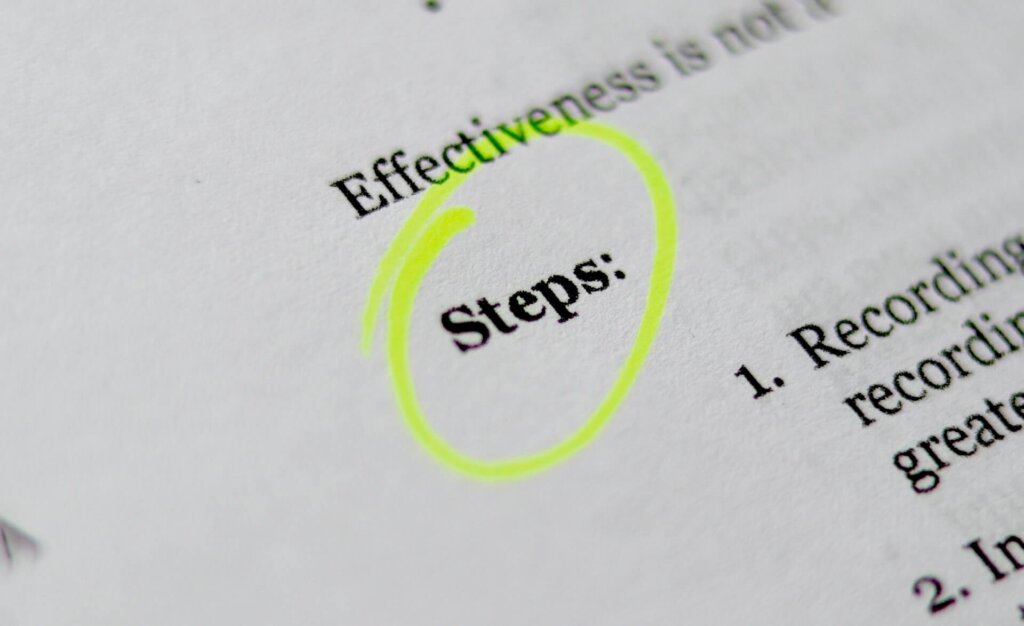Whether you’re a product marketer, digital marketer or data scientist, you’ve probably heard about CRO. Making its first appearance in marketing circles in the early 2000s, it’s safe to say that conversion rate optimisation is a fairly new practice and many businesses don’t have a conversion strategy. Though since then, conversion rate optimisation has only become more spoken about and is now an essential to the digital marketing industry, second only to AI. Sounds great right? Not really… The thing with conversion rate optimisation is that it doesn’t have a rulebook you can just blindly follow, and that’s where a lot of people fall short.
To start off, it might be good to quickly refresh your memory on what exactly CRO is and why it’s important. To boil it down, CRO basically refers to the practice of increasing the number of users on a website who execute a desired action, whether that action is buying a product, liking a post or requesting more information.
However, the fact that CRO is such a young discipline means that the whole practice has yet to be streamlined, and mistakes happen easily. The issue that a lot of analysts and marketers are facing with this is that they expect to follow case studies and examples, but one person’s best practice could be detrimental practice to another.
If you’re a seasoned marketing professional, you’ll know that what works for one instance or company does not always work for another.
Check out this customer story to discover how Mopinion’s software for collecting user feedback can fuel your digital marketing efforts.
Why is my conversion strategy failing?

CRO is really a tailored, well-thought-out strategy that should be consistently adjusted so that you can get more out of your users. In order to help you with your CRO journey, we’ve made a list of some of the most common mistakes made when it comes to conversion rate optimisation, and how to avoid them.
Not dedicating appropriate resources to CRO
Research conducted by Kampyle reported that 55 percent of companies surveyed did not have any full-time employees dedicated to conversion rate optimisation. It’s hard to understand why, since the search for “conversion rate optimisation” has jumped almost 500% since 2012.
So why are companies still dragging their feet when it comes to investing sufficient resources, technology, and expertise in optimising their websites? There are actually a number of reasons for this, sometimes it’s due to budgetary constraints, onboarding challenges or, what’s most damaging, is lack of understanding.
Are you a total newbie to the whole conversion rate optimisation process? Then check out our Beginner’s guide to get up to speed on the topic.

Failing to perform appropriate tests
If you have some knowledge on CRO, then you probably know that it usually goes hand in hand with usability or A/B testing. However, it’s important to note that conversion rate optimisation is not all about testing. A/B testing, for example, is a type of CRO, meaning that it’s just one tool in your CRO arsenal. Though it is pretty useful, it’s crucial that you ensure that you’re using the right tool to perform your tests and gain as much insight as possible. Getting into the mindset of making small tweaks to your site and constantly reviewing your user experience is essential to your conversion rate optimisation strategy and will ultimately help you make the changes you need to increase your conversion rates.
(Remember: make sure you don’t make too many tweaks to your UX at once, so you can get the best results.)
Check out this blog post to find out how you can validate your tests with user feedback!

Free White Paper: A Digital Feedback-Fueled Approach to Personalisation
A guide to Personalising the Digital Customer Experience (CX) with Online Feedback.
Not optimising for the entire customer journey
Optimising the customer journey is a great way to drive customer loyalty, which is one of the main principles of conversion rate optimisation. The thing to remember is that you’re not trying to attract a whole new set of customers or users, you are trying to optimise your website to get the most out of your current visitors.

Be sure not to focus all your attention solely on squeezing more revenue per visitor, as this is often how the overall customer journey gets neglected. Optimising the entire customer journey means that you pay attention and enhance every interaction by making it relevant, compelling and consistent across channels.
Why not just ask your customers why they’re not converting? Collecting, analysing and acting on your users’ feedback is a simple and effective way to optimising your customer’s journey. This is also a fantastic and easy way to keep things fresh and ensure your customer’s keep coming back.
Not being able to properly harness data
We all know that data is an essential tool to drive any marketing strategy, and it’s true that collecting data isn’t the problem, thanks to a broad range of data collection tools like Mopinion. But what about after you’ve collected and analysed your data? You’ll probably want to merge these contrasting data sets and use them to inform marketing decisions. However, that’s not always an easy task. Many large enterprises still struggle to merge disparate data sets like email engagement, web visitor behaviour, past customer purchases, etc. The key to harnessing your data is to understand the value of using both soft and hard data.
Let’s say your e-commerce website is getting plenty of traffic, but you notice your users aren’t converting. If you ignore your ‘soft’ data and only look at hard data and numbers, i.e. the amount of people that are abandoning their shopping carts, the amount of page visits, sessions, click-through rates, etc. It’s easy to blame your checkout system or your UX. When in reality, if people are abandoning their carts because your shipping terms are undesirable, without collecting user feedback you’d never know. Here at Mopinion we are experts in finding the ‘why’ behind the ‘what’, and that’s exactly why collecting soft data, via feedback forms, for example, is so important to your conversion strategy.

Not establishing a process
What so many companies fail to realise is that optimisation is about adopting a comprehensive process to growth using science. Though, as we mentioned earlier, a one-size fits all strategy is never applicable. So, for example, let’s say that you’ve been given the fun task of increasing the revenue per visitor and the conversion rate of your company website by 20%. Where would you start?
If you dive straight in and start making lots of different changes, your website will probably end up looking like a Christmas tree. Some of these tactics may work, some definitely won’t, and some will most likely make things worse than before. If you had an established process to follow, you’d know which tactics to try and which to ignore.

This may look something like this…
- Start off by identifying potential areas for improvement by doing research using both qualitative and quantitative data. Surveys are a handy and effective tool for gathering user feedback, which will help you to better understand your customer experience.
- Next, prioritise your areas for improvement using whatever scale works best for you.
- Rate your ideas based on probability, costs, potential, importance, ease etc.
- Form a hypothesis and think about the proposed change, the desired effect it should have on your website and the rationale behind it. Here’s a handy way to write your hypothesis:
“We believe that doing (A) for people (B) will make outcome (C) happen. We’ll know this when we see data (D) and feedback (E).”
- Perform tests to prove or disprove your hypothesis, and revise appropriately.
- Whatever the result, use it to provide some takeaways and learning opportunities so that you can reflect on your process, revisit your hypothesis and repeat as needed!

Relying on best practices only
As we’ve mentioned earlier, there are a number of so-called ‘best practices’ that a lot of professionals follow blindly without really understanding them. One example of this is the three-click rule, which states that users will generally give up on something if it takes longer than three clicks. Not only has this one been disproved plenty of times, but this idea that the best thing to do is reduce the number of clicks to a minimum is by no means bible.
Maybe your shopping cart abandonment rates are high, so you go straight to simplifying the checkout process, but your rates are still climbing, what do you do? Did you know, 24% of people abandon their online shopping cart because the site wanted them to create an account? That is just one of a hundred other possible reasons why your shopping cart abandonment rates are high.
The moral of the story is that you shouldn’t carelessly follow anyone’s ‘best practices’ until you’ve done your own research.
Bad CTA
It should be clear to you by now that conversion rate optimisation is an ongoing, long-winded process, and making a couple of random tweaks to your UX should not be your go-to for improving conversions. However, that being said, if your visitors can’t make out what they’re supposed to do on your website, then they’re certainly not going to stick around and find out. No matter how good or well crafted your content is, a bad call to action negates all you and your content team’s hard work. In case you’re totally new to marketing, a call to action is a text button that prompts the reader to take steps towards completing your goals. In other words, if you want people to convert, you need to ask them. Make sure your CTA is clear, visible and use A/B testing to decide the best placement.

Source: Stone Create
Improper targeting
Could the answer to your conversion rate woes be that you’re just targeting the wrong audience? Establishing a target audience is usually one of the very first things a marketing team will get working on, as it acts as a basis for all your marketing efforts. If, for some reason, you are targeting the wrong audience, chances are your optimisation efforts will be fruitless. Keep a close eye on your reviews, or if you notice your visitor numbers are increasing, but your conversions are not.
Perhaps there’s been a sudden, unexplained drop in the number of subscribers you have. Chances are, you’re targeting is off, or perhaps your audience has changed since you started. Make sure that you are studying your audience in depth and test any changes that will improve your customer experience.
You want to find people who will actually help your marketing efforts by becoming an advocate for your brand. Collect user feedback to really get to know your audience and find out what you’re missing.
It comes down to this: You have to understand who your visitors are, what they want, and why they aren’t converting.

Not maintaining unrealistic expectations
Studies in 2020 show that the average conversion rate of e-commerce websites is 2.86%, but it’s important to understand that what’s great for one industry might be subpar for another. Particularly for larger companies, getting your conversion strategy off the ground can be an arduous task. A lot of the issues with conversion strategies can be chalked down to impatience, expecting amazing results straight away. But that’s not how the real world works. CRO is an investment and things like testing requires a patient, open-minded approach. When an investment doesn’t provide the expected returns, it’s tempting to chalk it down as a failure and move on. Don’t. As we mentioned previously, conversion optimisation is a scientific-based strategy, and finding out what’s not true and what doesn’t work, is one of the most important steps in the scientific method.
In order to come up with valid ideas that move the site forward, I believe 80% of the effort is simply to listen to your customers. They talk to you through their actions, interactions, engagements and other data they leave behind. However, this can leave room for interpretation as well as emotions being hard to track. This is why we need a way to get in touch with our consumer, so we can answer the “why” to the “what” – Davy Schuyt, CRO Manager at Calvin Klein
Yes, CRO may help you increase your conversions by a percent or two, leading to more revenue. Though, your job does not stop there, you still need to get traffic, create a brand and keep attracting customers back to your site.
We could sit here and list off every single mistake made when it comes to conversion strategies, but it’s pretty certain that one common theme for conversion strategies stands out amongst them all: a focus on customers. Marketing is an ever-evolving process, so keeping up with every new optimisation trick or ‘hack’ will never get you or your business as far as stepping into the shoes of your customers will get you. Mopinion offers a host of helpful feedback metrics such as customer satisfaction (CSAT), new promoter score (NPS), customer effort score (CES) and goal completion rate (GCR) to help you gain a better, more comprehensive understanding of your customers and what drives them, and ultimately, what drives your conversion rate.
Ready to see Mopinion in action?
Want to learn more about Mopinion’s all-in-1 user feedback platform? Don’t be shy and take our software for a spin! Do you prefer it a bit more personal? Just book a demo. One of our feedback pro’s will guide you through the software and answer any questions you may have.
![[:en]conversion strategy mistakes[:]](https://media.mopinion.com/wp-content/uploads/2021/07/27143952/cro-mistakes-e1626703181936-300x225.jpg)







